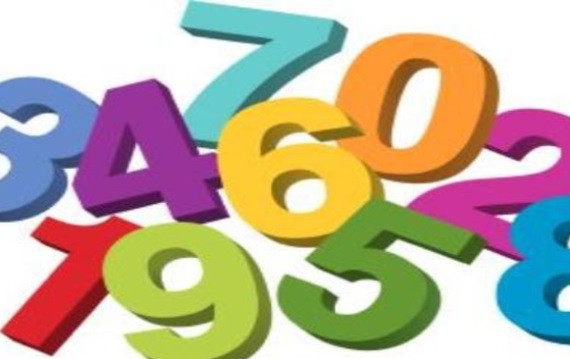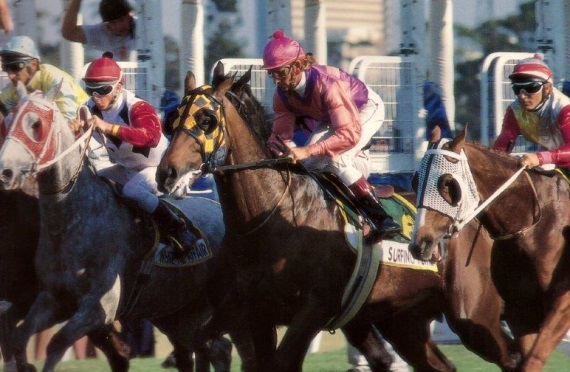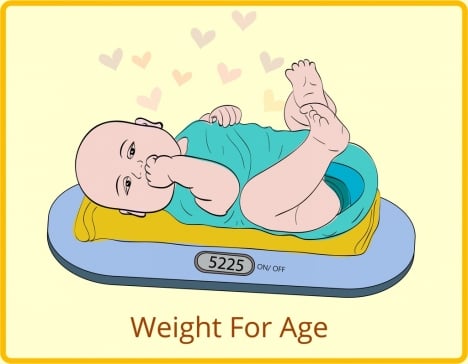Rumour has it that some advanced thinking has gone into getting rid of Weight For Age (WFA) from our handicapping system, writes Tony Mincione.
Opinions are not really encouraged in our game because we tend to go for the man and not the ball afterwards. But I think it’s safe to say there is a lot of unhappiness with our system.

Some issues split people right down the middle, you are either “for or against”.
Issues like abortion, the death penalty, and maybe WFA.
WEIGHT FOR AGE, as created by the Admiral (Rous) about 150 years ago, is the “expected improvement” your expensive, shiny, young thoroughbred ‘should’ make over time
The idea of tampering with this will have the purists spitting like Never Trumper’s on CNN. I’m looking forward to my first ever hate-mails even though I think of myself as somewhat of a purist.

But there is definitely a case and I make it below:
- Possibly the biggest argument against the WFA table is that it is built on the premise that horses WILL in due course make the maturing development that is hard-wired into the rating system.
Many people, perhaps even the majority, feel that most (!) horses do not make the expected weight-for-age improvement. They are also adamant that high early ratings haunt young horses who unable to keep up with the expected improvement built into those high ratings by the WFA table.
- Before 1995 race figures were derived from points earned for wins and was used as the basis to calculate weights in handicaps. Implicit was the fact that if you were winning, clearly you didn’t need an allowance, and if you were losing your points didn’t go up. We didn’t need WFA, it was built into “what you see is what you get today”.

Merit ratings are a massive refinement on just giving arbitrary points, and there is no question that adjusting the points with collateral form was, and is, an earth shattering improvement.
But, and however much you can see the much superior accuracy, it still does not address the EXPECTED future improvement which remains the elephant in the room.
- As time goes on the Weight For Age allowance drops sharply. In the Met for eg, a 3yo would get 6kgs, a 4yo 0.5kgs. By the July, 6 months later, the 6kgs for 3yo’s becomes 2kgs, and by the following MET it’s 0,5 Kg. So the slope is much steeper in the beginning as 3yo’s and tapers to flat by 4 ½ yo and the discussion is mostly about 3yo’s vs 4yo’s in handicaps. It’s also worth remembering that this years 3yo’s are next years 4yo’s by which I mean if there was a bias for one group, everyone gets a turn.
- The handicappers are assessing every run so 99% of the time there is no need to use the presumption of future development and penalising horses before a race at the weights. If a horse is making the WFA development, the ratings will pick it up and those that don’t, ratings likewise will show that.
Taking WFA out of the rating system does NOT eliminate WFA, which happens as a force of nature. It just forces horses to show what their individual development actually is rather than assuming that it will be made according to steps in an ancient table.

On top of that, and almost a point on it’s own, the table crudely goes in calendar month steps for each crop and weights change depending with a race is on the 31st or the 1st of a month. The table makes 30 days important, yet ignores birth dates where one horse may be born 4 or 5 (or 6) months apart.
- Removing the WFA will make ratings more real because they would be based more on has happened and less on what might happen. Some people use a conceptualisation of a “gross” and “nett” rating to work with ratings on the fly and without having to look at the WFA table all the time. The gross rating is inflated with the improvement to come, and nett is what has really happened.

Oh Susanna – the Sun Met lead in! (Pic – Chase Liebenberg Photography)
So an easy example would be OH SUSANNA in the Met. (If we can ignore the +6 which made her 121 later, then) the WFA in the Met for 3yo is 6kgs and the sex allowance is 2.5kgs, so 60 -6 -2.5 = 51.5kgs. So the gross 115 – 17 (the 8.5kgs) = nett 98. The argument goes then: why lumber our figures with a future 17 lbs improve which may or may not materialise?
- I would probably add this final point. As in the example above, we give females a generous sex allowance of 2.5kgs in WFA and some conditions races. There is NO sex allowance In handicaps. The reason is that if the filly needs the sex allowance in a handicap, the rating shows in beaten lengths how good she is or isn’t. From reality the rating doesn’t need to assume it, like it does WFA races.

So the filly IGUGU won the July carrying the full 55kgs from her 110 rating even though she had only run against fillies up until then to acquire her rating, but in the Met received 2.5kgs sex allowance. It wasn’t necessary to have a sex allowance in the July because if she did her rating would have been 105 from actual races, not presumption. The same principle would apply to WFA then, that WFA is a presumption and so is the sex allowance. In handicaps, you don’t need the presumption of an age or sex allowance, what you see is what you get.
We would be disingenuous if we didn’t try to explore possible unintended consequences and see if they can be handled.
Obvious flaws that jump to mind are:
- A horse that is sidelined for whatever reason, will have an advantage against horses that go on and race in the meantime. Busy horses are being measured for WFA development within their ratings as they go on, while the horse away from races will be maturing unassessed.

But currently we give horses a kick-back if they have been off the track for a while anyway. Also injured or rested horses have missed all opportunities to earn so it’s likely some people could see that as a “kama” benefit, and IF they did make the WFA improvement and returned 100% fit then they would have a one-off advantage and get re-rated immediately.
- We know that top horses don’t just make WFA improvement, but surpass it. Wouldn’t they have an unfair advantage in handicaps? Yes, but top horses are also assessed as they dip into feature races and they get their true ratings sooner rather than later.
- It’s apparent that younger horses would get an advantage, especially if they mature faster than the average. However, many have argued (really, not a Trump “many”) that the WFA scale is too generous to 3yo’s. It has been noted (locally and overseas) that sometimes 3yo’s do better than they should (as a group and over the years) in early open races. So you have arguments that say the WFA helps 3yo’s AND taking it away would help 3yo’s. It’s clearly not cut and dried!
What this is NOT:
WFA is an assumption and one size does NOT fit all.
We do NOT need to futurise ratings for future handicaps.
It’s NOT ignoring WFA in current ratings, but going to a “nett” system.
It’s NOT a denial of WFA, but using real-time WFA to simplify and live in the present.
This is about WFA assumptions in ratings, NOT about WFA races.
WFA TABLE pg121 http://www.nhra.co.za/pubs/docs/rules/Rules_2017_Final.pdf








